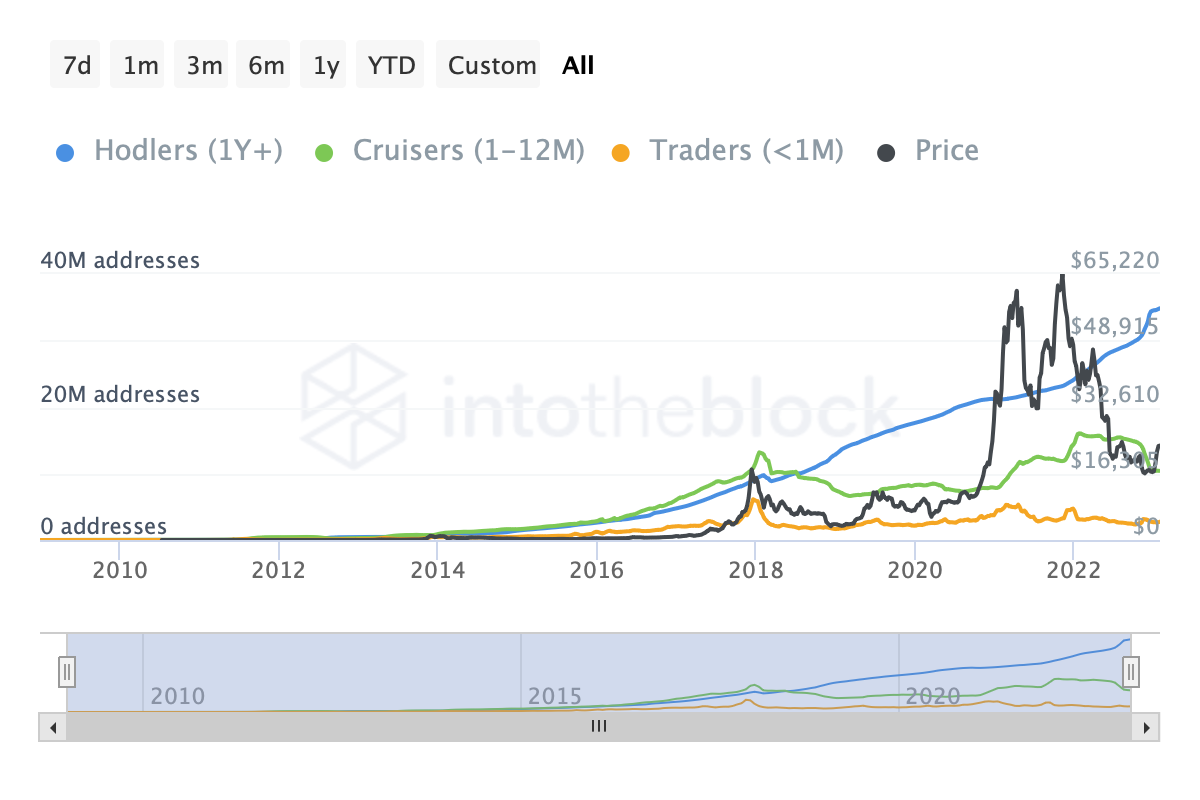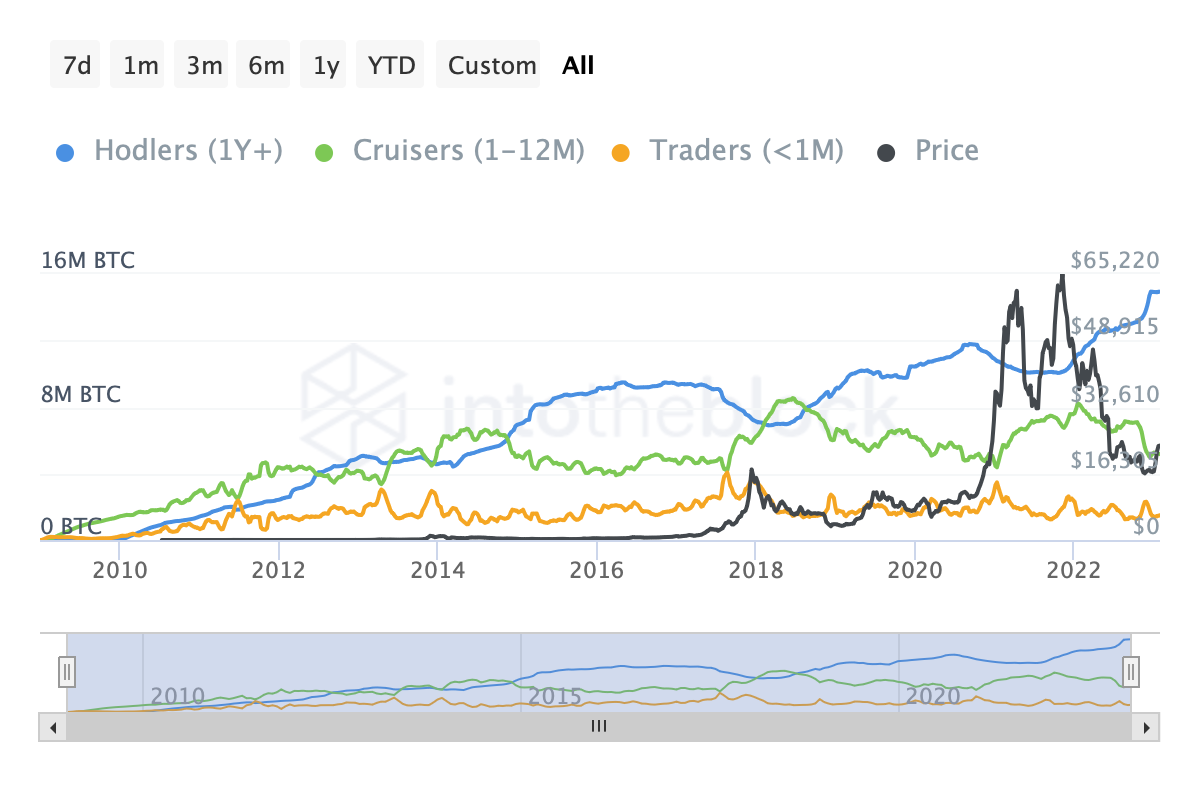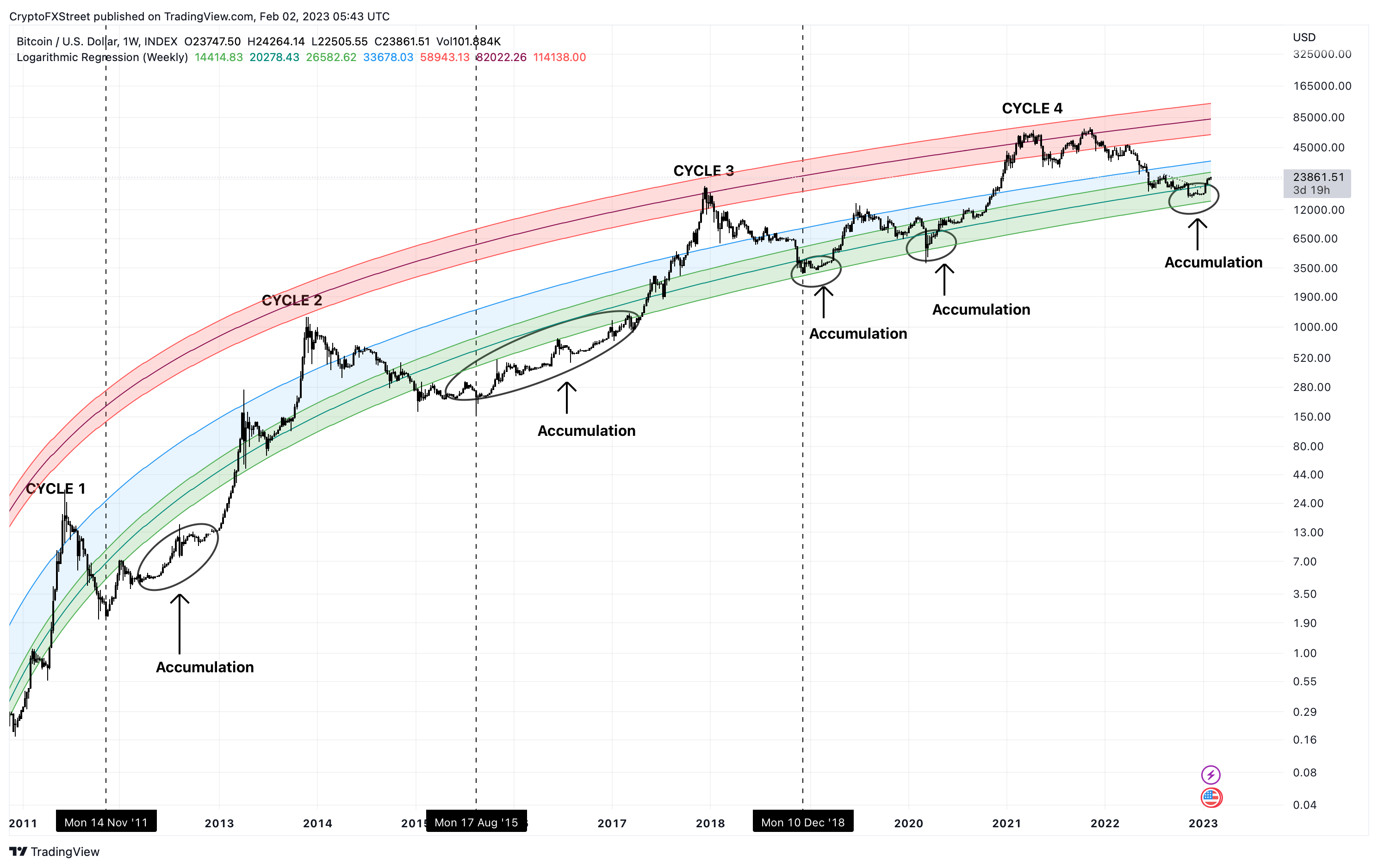- The number of Bitcoin whales and their balances is seeing non-stop growth despite the bear market.
- These investors are playing the long game, and this trend is likely to continue, leaving little BTC in circulation.
- A continuation of this accumulation could lead to a negative supply shock, inevitably pushing the big crypto’s market value higher.
Bitcoin price continues to delay a retracement in the short term despite the hawkish tone of the Fed in Wednesday’s policy meeting. While the lower timeframe outlook can be indecisive, taking a look at the long-term outlook or the big picture is likely to provide a uniform view of where it is headed.
The best way to ascertain is by taking a look at what its holders or investors are doing. This metric will reflect their take on the asset and will indicate if they are bullish or bearish in the long run.
Also read: Fed remains hawkish with 25 bps hike, how will Bitcoin price react?
Bitcoin whales dominate the network
Bitcoin addresses and their holdings are important to determine the state of the holders and if they are in it for the long term or just grifters. IntoTheBlock’s Addresses by Time Held metric segregates holders into three categories – holders, cruisers and traders.
Holders are those addresses that hold their BTC investment for more than a year, and cruisers tend to hold their assets for more than a year but sell in under a year. Traders, on the other hand, sell their holdings in under a month.
In June 2018, there was a bullish crossover where the number of addresses belonging to the holder category overtook the cruisers. In other words, the sentiment among investors changed; BTC was now being viewed as a long-term investment vehicle. On the contrary, the cruiser category continued to increase from 13 million in 2018 to 16 million in 2022.
Since then, whale addresses have been on an uptrend and currently hover around 34.77 million, but the cruiser cohort has declined to 10.40 million.

BTC addresses by time held
As this chasm between the two increases, it denotes a paradigm shift in investor sentiment and outlook in viewing Bitcoin as an investment vehicle or asset. Additionally, this change can be attributed to the change in the narrative around Bitcoin in the traditional world and the type of investors it attracted as a result.
Roughly starting in 2019, institutional investors began stepping into the crypto space and focussing mainly on Bitcoin and Ethereum. So the inclusion of high-net-worth individuals and companies could be one of the key reasons why long-term investors are increasing.
While the number of addresses holding BTC for more than a year is 2.68 times more than short-term holders, a more nuanced outlook can be seen by taking a look at the number of BTC held by these addresses.
Whales, aka holders with an investment horizon of more than a year, have 14.94 million BTC, and the combination of the other two categories of short holders constitutes 6.66 million BTC. The ratio of long-term to short-term holders is 2.24, which is still a large skew, favoring investors who are playing the long game.

BTC balance by time held
Bitcoin market cycles and what retail investors can do
Bitcoin is currently putting an end to the fourth cycle in its 13-year history, and it is still unclear if $15,443 was the bottom. Assuming the cycle four bottom stretches anywhere from $15,000 to $9,000, investors can start buying the dips. This method of investing small amounts during market retracement at the end of a bear market or the start of a bull rally is known as Dollar Cost Averaging (DCA).

BTC/USDT 1-week chart
This method of DCA factors out the “timing-the-bottom” and “knife-catching” aspects that usually plague investors and prevent them from making a firm decision or sticking to it.




